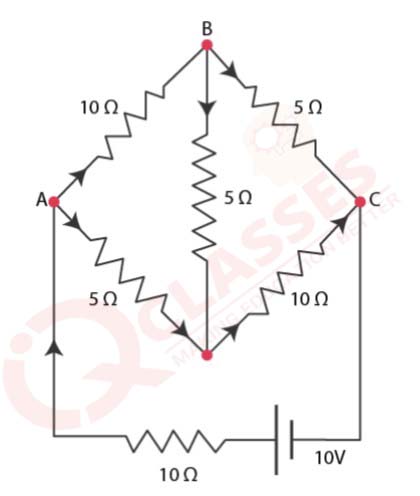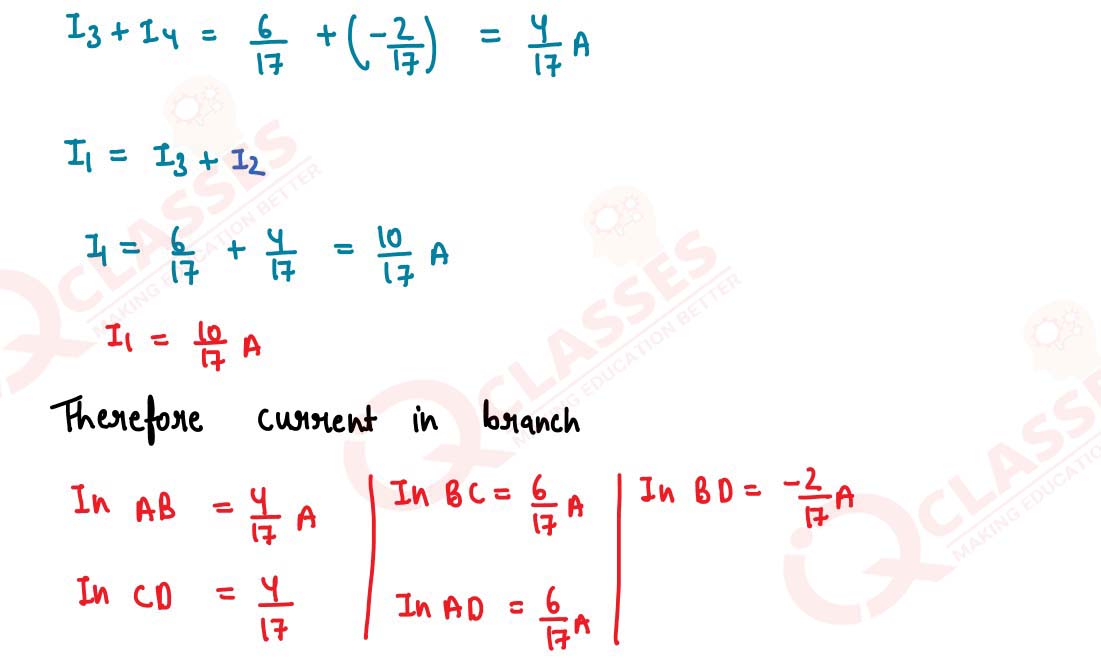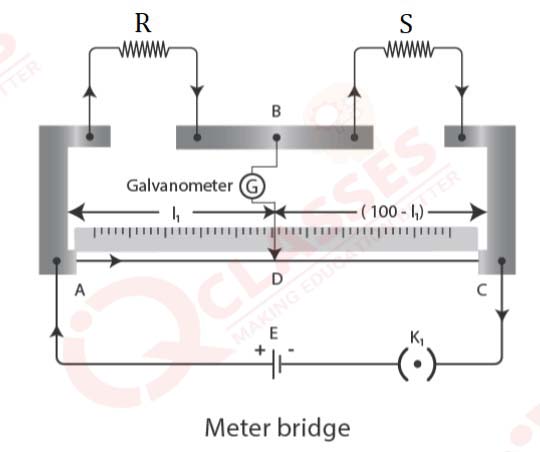Q1
The storage battery of a car has an emf of 12 V. If the internal resistance of the battery is 0.4 Ω,
what is the maximum current that can be drawn from the battery?
solutions
solutions

Q2
A battery of EMF 10 V and internal resistance 3 Ω is connected to a resistor. If the current in the
circuit is 0.5 A, what is the resistance of the resistor? What is the terminal voltage of the
battery when the circuit is closed?
solutions
solutions

Q3
a) Three resistors 1 Ω, 2 Ω, and 3 Ω are combined in series. What is the total resistance of the
combination?
b) If the combination is connected to a battery of emf 12 V and negligible internal resistance, obtain the potential drop across each resistor.
solutions

b) If the combination is connected to a battery of emf 12 V and negligible internal resistance, obtain the potential drop across each resistor.
solutions


Q4
a) Three resistors 2 Ω, 4 Ω and 5 Ω are combined in parallel. What is the total resistance of the
combination?
b) If the combination is connected to a battery of emf 20 V and negligible internal resistance, determine the current through each resistor, and the total current drawn from the battery.
solutions

b) If the combination is connected to a battery of emf 20 V and negligible internal resistance, determine the current through each resistor, and the total current drawn from the battery.
solutions


Q5
At room temperature (27.0 °C) the resistance of a heating element is 100 Ω. What is the temperature
of the element if the resistance is found to be 117 Ω, given that the temperature coefficient of the
material of the resistor is 1.70 × 10–4 °C–1.
solutions
solutions

Q6
A negligibly small current is passed through a wire of length 15 m and uniform cross-section 6.0 ×
10–7 m2, and its resistance is measured to be 5.0 Ω. What is the resistivity of the material at the
temperature of the experiment?
solutions
solutions

Q7
A silver wire has a resistance of 2.1 Ω at 27.5 °C, and a resistance of 2.7 Ω at 100 °C. Determine
the temperature coefficient of resistivity of silver.
solutions
solutions

Q8
A heating element using nichrome connected to a 230 V supply draws an initial current of 3.2 A which
settles after a few seconds to a steady value of 2.8 A. What is the steady temperature of the
heating element if the room temperature is 27.0 °C? Temperature coefficient of resistance of
nichrome averaged over the temperature range involved is 1.70 × 10–4 °C–1.
solutions


solutions



Q9
Determine the current in each branch of the network shown in the figure:

solutions







solutions







Q10
A ) In a meter bridge given below, the balance point is found to be at 39.5 cm from the end A, when
the resistor S is of 12.5 Ω. Determine the resistance of R. Why are the connections between
resistors in a Wheatstone or meter bridge made of thick copper strips?
B ) Determine the balance point of the bridge above if R and S are interchanged.
C ) What happens if the galvanometer and cell are interchanged at the balance point of the bridge? Would the galvanometer show any current?

solutions

B ) Determine the balance point of the bridge above if R and S are interchanged.
C ) What happens if the galvanometer and cell are interchanged at the balance point of the bridge? Would the galvanometer show any current?

solutions


Q11
A storage battery of emf 8.0 V and internal resistance 0.5 Ω is being charged by a 120 V dc supply
using a series resistor of 15.5 Ω. What is the terminal voltage of the battery during charging? What
is the purpose of having a series resistor in the charging circuit?
solutions

solutions


Q12
In a potentiometer arrangement, a cell of emf 1.25 V gives a balance point at 35.0 cm length of the
wire. If the cell is replaced by another cell and the balance point shifts to 63.0 cm, what is the
emf of the
second cell?
solutions
solutions

Q13
The number density of free electrons in a copper conductor estimated in Example 3.1 is 8.5 × 1028
m–3. How long does an electron take to drift from one end of a wire 3.0 m long to its other end? The
area of cross-section of the wire is 2.0 × 10–6 m2 and it is carrying a current of 3.0 A.
solutions

solutions

